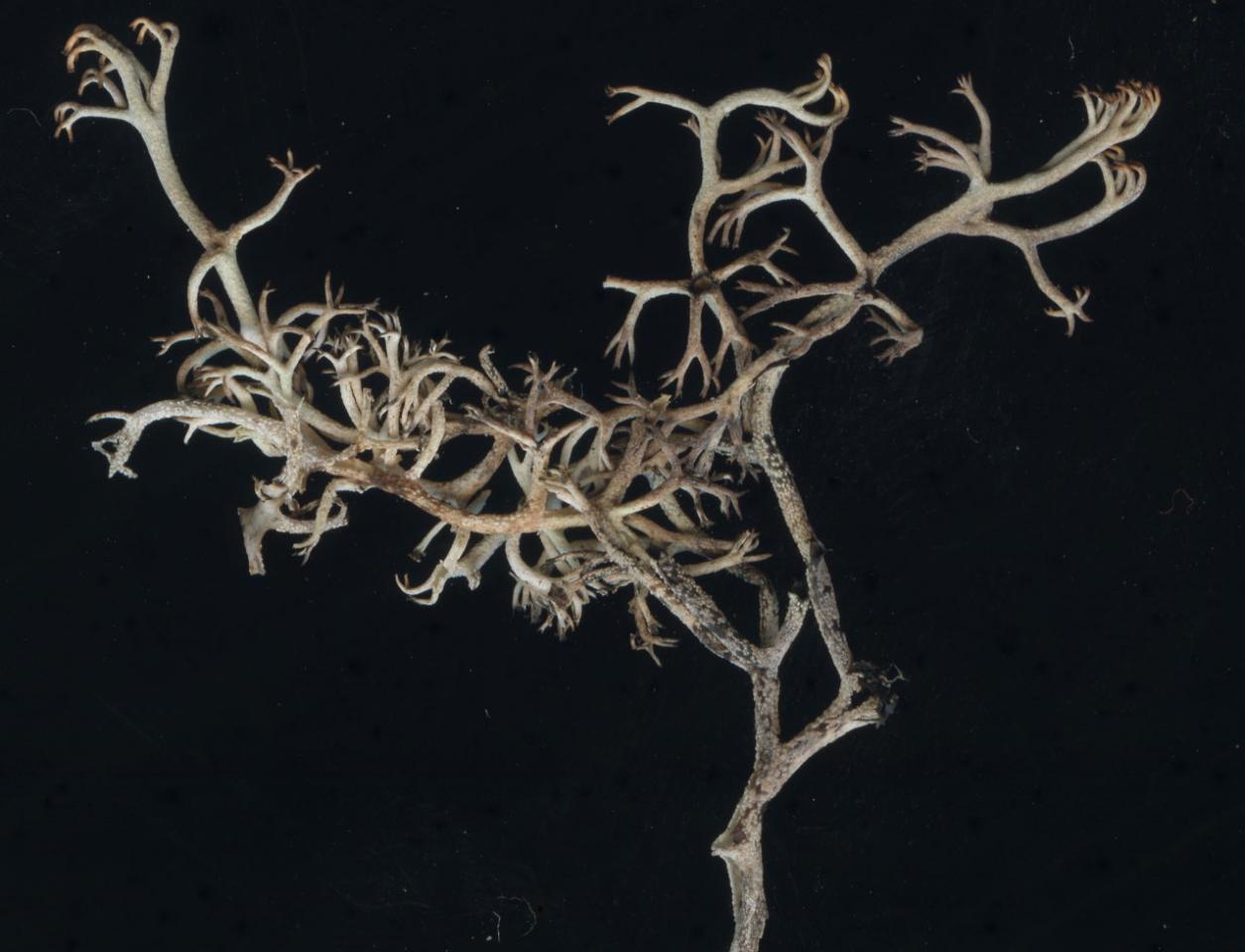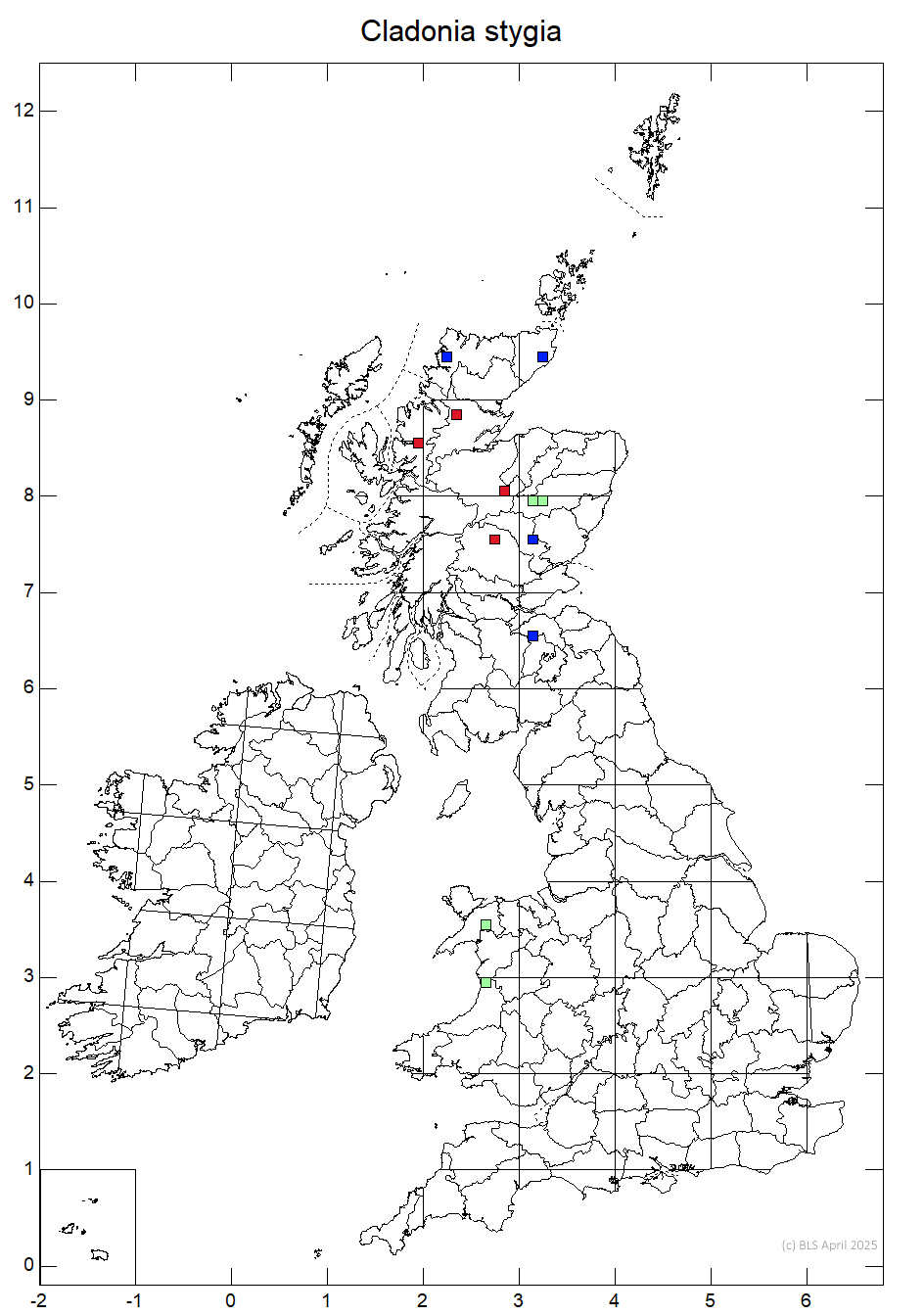Cladonia stygia
An Northern and upland Reindeer Moss closely resembling Cladonia rangiferina and probably over looked as it. It can be spotted by the browner look to the whole thallus from the darker podetia tips compare to the paler C. rangiferina and confirmed by the distinctive intensely blackened decorticate basal areas with a mosaic of scattered white areole. The status of this lichen is unclear but it has probably been overlooked.
Very similar to Cladonia rangiferina but differs by being pale grey to strongly brown at the apices, in the intensely blackened decorticate basal area with a mosaic of scattered white areoles at and towards the base of the podetia, and the red pycnidial jelly. Thallus C–, K+ yellow, KC–, Pd+ red, UV– (fumarprotocetraric acid, atranorin).
Molecular studies have proved that Cladonia stygia is independent of C. rangiferina (Kanz et al. 2015).
Moorland, wet bogs and upland woodland, recently in areas of slight snow lie in wind-blown montane heaths

Rare, but certainly overlooked. Nineteenth century records from Scottish Highlands (Braemar) and Wales (Merioneth and Snowdonia) and more recently from Wales (Cardigan) and Scotland (E. Perthshire, E. Ross & Caithness).
The status of this lichen is unclear but it has probably been overlooked.
Britain: Data Deficient & Notable
Kanz, B., von Brackel, W., Cezanne, R., Eichler, M., Hohmann, M.L., Teuber, D. & Printzen, C. (2015). DNA barcodes for the distinction of reindeer lichens: a case study using Cladonia rangiferina and C. stygia.
Herzogia 28: 445–464.
Pino-Bodas, R., Sanderson, N., Cannon, P., Aptroot, A., Coppins, B., Orange, A. & Simkin, J. (2021). Lecanorales, Cladoniaceae: including the genera Cladonia, Pilophorus and Pycnothelia. Revisions of British and Irish Lichens 19: 1-45. Link

